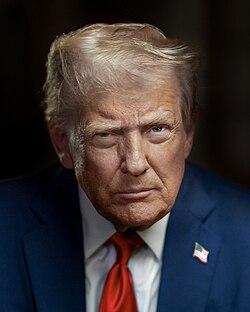In recent months, the debate over the participation of transgender athletes in girls’ sports has dominated headlines and sparked heated discussions nationwide. However, an emerging perspective challenges the prevailing narrative by arguing that former President Donald Trump, rather than trans athletes, poses the most significant threat to the integrity and future of girls’ sports. This opinion piece explores how political rhetoric and policies advanced under Trump’s influence have had profound impacts on women’s athletics, shifting the focus from inclusive competition to partisan contention.
Trump’s Rhetoric Overshadows Real Challenges Facing Girls Sports
While the public discourse frequently fixates on the participation of transgender athletes in girls’ sports, it’s the inflammatory rhetoric from high-profile figures that causes far greater harm. Rather than addressing tangible issues-such as funding disparities, access to training facilities, and the growing mental health crisis among young athletes-attention is diverted to a divisive cultural debate fueled by misinformation. This distraction undermines the progress sports programs have made toward inclusivity and equity, and ultimately, it sidelines the real concerns impacting female athletes today.
Consider the following comparison of challenges faced by girls’ sports programs, illustrating the actual barriers that demand urgent attention:
| Challenge | Impact on Girls’ Sports | Current Attention Level |
|---|---|---|
| Funding Inequality | Limits access to coaching and equipment | Low |
| Limited Facilities | Reduces training and competitive opportunities | Moderate |
| Mental Health Support | Affects athlete performance and retention | Low |
| Trans Athlete Debate | Dominates media, distracts from other issues | High |
Instead of exploiting divisive narratives, stakeholders must focus on building stronger programs that promote participation, wellbeing, and fairness. Addressing these underlying challenges will have a much more meaningful impact on supporting girls in sports than the ongoing political theater surrounding transgender athletes.
The Impact of Political Agendas on Athletic Opportunities for Women
When political leaders prioritize their agendas over fair competition, the true spirit and integrity of girls’ sports suffer. Policies aimed at excluding or vilifying trans athletes often serve as a distraction from more pressing threats to female athletic opportunities, such as budget cuts, limited scholarship funding, and inadequate access to training facilities. Instead of fostering an inclusive environment where all athletes can thrive, these politicized narratives exacerbate division and shift focus away from tangible barriers that girls in sports face daily.
Moreover, examining the broader impact reveals how political interference can undermine Title IX protections and stall progress made over decades. Funding inequities, unequal media coverage, and insufficient support systems remain some of the critical issues that politicians often overlook in favor of polarizing debates. The following table highlights key factors impacting girls’ athletics, illustrating where attention-and resources-are truly needed:
| Issue | Impact on Girls’ Sports | Current Status |
|---|---|---|
| Budget Cuts | Reduced programs and scholarships | Increasing |
| Media Coverage | Less visibility, fewer sponsorships | Stagnant |
| Facility Access | Lower quality training environments | Unequal |
| Policy Interference | Diverts attention from real challenges | Growing |
- True threats: systemic inequality and underfunding
- Misplaced focus: politicized attacks overshadow core issues
- Need for unity: collaboration over division to safeguard opportunities
Why Focus on Trans Athletes Distracts from Systemic Inequities
In the ongoing debate surrounding girls’ sports, the focus on trans athletes has become a convenient distraction from deeper, systemic issues undermining the integrity and equity of athletic programs nationwide. While policymakers and media outlets zero in on a small population, they overlook fundamental challenges such as unequal funding, lack of access to quality training facilities, and outdated school policies that fail to prioritize the needs of all female athletes. These real barriers to fairness impact the vast majority of girls in sports and deserve far more critical attention than the divisive rhetoric dominating headlines.
Rather than addressing these entrenched problems, the obsession with trans participation risks alienating communities and creating a hostile environment for all young athletes. To truly protect and uplift girls’ sports, it’s essential to recognize the broader landscape:
- Disparities in coaching and mentorship opportunities
- Limited scholarships and sponsorships for female athletes
- Gender biases in media coverage and promotion
By shifting the spotlight onto these systemic inequities, stakeholders can develop inclusive solutions that strengthen girls’ sports overall-rather than perpetuating division through politics and hysteria.
Policy Recommendations to Protect and Promote Inclusive Girls Sports
Effective policies must focus on fostering equity, participation, and safety for all girls in sports, rather than fueling divisive rhetoric. Prioritizing investment in community programs that provide affordable access to sports facilities and coaching can bridge gaps in opportunity across socioeconomic backgrounds. Additionally, implementing comprehensive education for coaches, parents, and athletes on inclusivity, gender diversity, and anti-discrimination encourages a culture of respect and fairness. Such initiatives not only protect current participants but also invite a broader spectrum of girls to engage in athletics without fear of exclusion or backlash.
Legislative measures should emphasize support over exclusion, enshrining protections that uphold the rights of every athlete while maintaining competitive integrity through scientifically informed guidelines. This dual focus creates environments where girls’ sports thrive, free from politicized attacks. Below is a concise overview of core policy areas essential to this mission:
| Policy Focus | Key Actions | Expected Outcomes |
|---|---|---|
| Access & Funding | Increase grants for local sports programs | Expand participation among underrepresented groups |
| Education & Training | Develop inclusivity workshops for coaches | Build supportive team environments |
| Non-Discrimination Laws | Enforce policies protecting all athletes | Reduce exclusion based on gender identity |
| Scientific Regulation | Form expert committees for eligibility guidelines | Maintain fair competition standards |
In Retrospect
In an ongoing debate over the future of girls’ sports, this opinion underscores the need to focus on the most significant challenges facing female athletes today. Rather than diverting attention to transgender participation, the article contends that political figures like former President Donald Trump pose a more substantial threat through policies and rhetoric that undermine equity and inclusion in sports. As conversations continue nationwide, stakeholders must prioritize evidence-based approaches that protect the integrity and accessibility of girls’ athletics for all participants.





